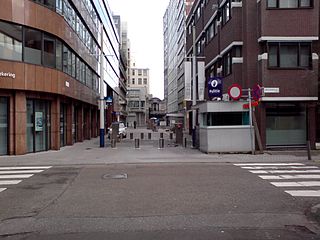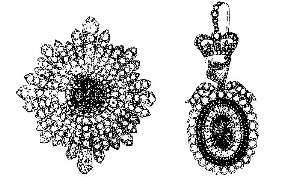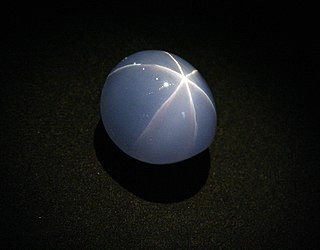 W
WIn July 1993, a total of 304 items were stolen from the National Art Museum of Azerbaijan in Baku. They included 274 artworks and 30 medieval miniatures. The most valuable of them was Women's Bathhouse by Albrecht Dürer, valued at about $10 million. Other stolen artworks were made by Rembrandt, Anthony van Dyck, Nicolas Poussin, Jacob van Ruisdael and Jean-François Millet, among others. The artworks had been smuggled to the United States, from which they were later recovered. In 2001, twelve artworks were returned to their previous place of display, the Kunsthalle Bremen in Germany, while the rest was returned to Azerbaijan.
 W
WThe Antwerp diamond heist, dubbed the "heist of the century", was by far the largest diamond heist. Since then, the heist was classified to be one of the largest robberies in history. Thieves stole loose diamonds, gold, silver and other types of jewelry valued at more than $100 million. It took place in Antwerp, Belgium, during the weekend of 15–16 February 2003. Though arrests were made and time was served, most of the diamonds stolen remain unrecovered.
 W
WIn 1830, an attempt was made to steal the skull from the remains of American president George Washington, which resided in a tomb at Mount Vernon. Instead, the thief mistakenly removed the skull from the remains of one of Judge Bushrod Washington's in-laws. The desecration of the burial site prompted a new, more secure, burial vault to be constructed.
 W
WThe curved saber of San Martín is an historic weapon used by José de San Martín.
 W
WThe DeLong Star Ruby, a 100.32-carat (20.064 g) oval cabochon star ruby, was discovered in Burma in the 1930s. It was sold by Martin Ehrmann to Edith Haggin DeLong for US$21,400, who then donated it to the American Museum of Natural History in New York City in 1937.
 W
WOn 25 November 2019, royal jewellery was stolen from the Green Vault museum within Dresden Castle in Dresden, Saxony, Germany. The stolen items include the 49-carat Dresden White Diamond, the diamond-laden breast star of the Polish Order of the White Eagle which belonged to the King of Poland, a hat clasp with a 16-carat diamond, a diamond epaulette, and a diamond-studded hilt containing nine large and 770 smaller diamonds, along with a matching scabbard. The missing items were of great cultural value to the State of Saxony and were described as priceless; other sources estimate the total value at about €1 billion.
 W
WThe Eagle Diamond is a gemstone discovered in Eagle, Wisconsin in 1876. It was one of more than a dozen rare gems stolen in a heist from the American Museum of Natural History in 1964 and remains missing to this day.
 W
WThree famous paintings were stolen from the Kunsthalle Schirn in Frankfurt in 1994. Two thieves and a dealer were caught and sentenced to prison, but the people who had ordered the theft were never brought to justice. This case of art theft is unique in that the paintings were recovered by buying them back from the people behind the theft, resulting in a heavy profit for the Tate Gallery, owner of two of the paintings.
 W
WThe Great Train Robbery was the robbery of £2.6 million from a Royal Mail train heading from Glasgow to London on the West Coast Main Line in the early hours of 8 August 1963, at Bridego Railway Bridge, Ledburn, near Mentmore in Buckinghamshire, England.
 W
WThe Hatton Garden safe deposit burglary occurred in April 2015, when an underground safe deposit facility in Hatton Garden, London, was burgled. According to official sources, the total stolen had an estimated value of up to £14 million, of which only £4.3 million has been recovered. The heist was planned and carried out by six elderly men who were experienced thieves, all of whom were arrested, pleaded guilty and received prison sentences in March 2016. Four other men were also tried on suspicion of involvement; three were found guilty and sent to prison, while the fourth was cleared.
 W
WThe Jewels Belonging to the Most Illustrious Order of Saint Patrick, commonly called the Irish Crown Jewels or State Jewels of Ireland, were the heavily jewelled star and badge regalia created in 1831 for the Sovereign and Grand Master of the Order of St. Patrick, an order of knighthood established in 1783 by George III as King of Ireland to be an Irish equivalent of the English Order of the Garter and the Scottish Order of the Thistle. The British monarch was the Sovereign of the order, as monarch of Ireland until 1801 and of the United Kingdom of Great Britain and Ireland thereafter. The Lord Lieutenant of Ireland was the Grand Master in the absence of the Sovereign. The insignia were worn by the Sovereign at the investiture of new Knights as members of the order, and by the Grand Master on other formal ceremonial occasions. They were stolen from Dublin Castle in 1907 along with the collars of five knights of the order. The theft has never been solved and the jewels have never been recovered.
 W
WIn the early morning hours of March 18, 1990, thirteen works of art were stolen from the Isabella Stewart Gardner Museum in Boston. Guards admitted two men posing as police officers responding to a disturbance call, and the thieves tied the guards up and looted the museum over the next hour. The case is unsolved; no arrests have been made and no works have been recovered. The Federal Bureau of Investigation (FBI) has valued the haul at $500 million, and the museum is offering a $10 million reward for information leading to the art's recovery, the largest bounty ever offered by a private institution.
 W
WThe Loughton incinerator thefts occurred between 1988 and 1992 at the Bank of England's incinerator plant at Debden in Loughton, Essex – four employees of the plant stole more than GB£600,000 in a series of regular thefts. The four participants and their spouses were arrested in 1992, with only one being prosecuted in criminal court. In a civil suit, the remaining members of the group were ordered to repay half a million pounds to the bank. The story of the case has been adapted into two feature-length films.
 W
WThe 2011 Montreal Museum of Fine Arts theft took place in two separate incidents during September and October of that year. In both instances, the same thief took a small ancient stone piece that was openly exhibited, without a protective case, and smuggled it out of the museum. One has since been recovered; however, the thief remains unidentified and the whereabouts of the other is not known.
 W
WThe Royal Library in Copenhagen is the national library of Denmark and the university library of the University of Copenhagen. It is among the largest libraries in the world and the largest in the Nordic countries. In 2017 it merged with the State and University Library in Aarhus to form a combined national library. The combined library organisation is known as the Royal Danish Library.
 W
WShergar was an Irish-bred, British-trained Thoroughbred racehorse. After a very successful season in 1981 he was retired to the Ballymany Stud in County Kildare, Ireland. In 1983 he was stolen from the stud, and a ransom of £2 million was demanded; it was not paid, and negotiations were soon broken off by the thieves. In 1999 a supergrass, formerly in the Provisional Irish Republican Army (IRA), stated they stole the horse. The IRA has never admitted any role in the theft.
 W
WThe Star of India is a 563.35-carat star sapphire, one of the largest such gems in the world. It is almost flawless and is unusual in that it has stars on both sides of the stone. The greyish-blue gem was mined in Sri Lanka and is housed in the American Museum of Natural History in New York City.
 W
WThe Albanian Civil War in 1997 was sparked by pyramid scheme failures in Albania soon after its transition to a market economy. The government was toppled and more than 2,000 people were killed. It is considered to be a rebellion, a civil war, or a rebellion that escalated into a civil war.
 W
WThe theft of medieval art from Quedlinburg was perpetrated by United States Army Lieutenant Joe T. Meador in the days prior to the end of World War II in Europe. Precious church objects stored near Quedlinburg, Germany, were found by the U.S. Army. They were placed under guard, but eight extremely valuable objects went missing, including a 9th-century illuminated manuscript gospel book, the Samuhel Evangeliar, and a printed evangeliary dating to 1513, both with jewelled book-covers, as well as reliquaries, an ivory liturgical comb, a perfume-flask made out of rock crystal and other irreplaceable artifacts of historical importance.
 W
WThe Jules Rimet Trophy, awarded to the winner of the football World Cup, was stolen in 1966 prior to the 1966 FIFA World Cup in England. The trophy was later recovered by a dog named Pickles who was later commended and gained a cult following for his heroism. One man was convicted for being involved but other possible culprits are still unknown. The trophy was eventually won by the hosting team England.